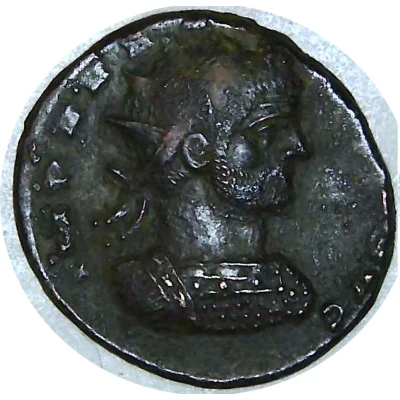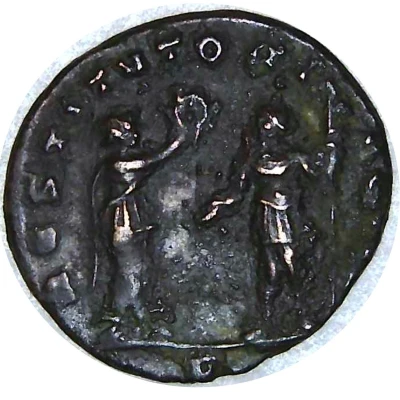


© jones2m2002
Antoninianus - Aurelianus RESTITVTORI GENTIS
| Silver | - | - |
| Issuer | Rome › Roman Empire (27 BC - 395 AD) |
|---|---|
| Emperor | Aurelian (Lucius Domitius Aurelianus) (270-275) |
| Type | Standard circulation coin |
| Years | 270-275 |
| Value | Antoninianus (1) |
| Currency | Antoninianus, Reform of Caracalla (AD 215 – 301) |
| Composition | Silver |
| Shape | Round (irregular) |
| Technique | Hammered |
| Orientation | Variable alignment ↺ |
| Demonetized | Yes |
| Updated | 2024-10-05 |
| Numista | N#291231 |
|---|---|
| Rarity index | 97% |
Reverse
Aurelian, standing left, holding sceptre, receiving wreath from woman, standing right.
Officina in exergue.
Script: Latin
Lettering: RESTITVTORI GENTIS
Translation: To the restorer of the nation.
Comment
Source:Online Coins of the Roman Empire (OCRE)
Interesting fact
The Antoninianus coin , which features Aurelianus (also known as Aurelian) on the obverse and RESTITVTORI GENTIS on the reverse, was minted during a time of significant economic and political change in the Roman Empire. Aurelian was a military leader who became emperor in 270 AD and ruled until his assassination in 275 AD. During his reign, he implemented a number of reforms aimed at stabilizing the empire and addressing its economic challenges, including debasing the currency to increase its supply and stimulate trade. The Antoninianus coin was introduced during this time as a new denomination to replace the earlier denarius, and it was made of silver, which was a more valuable and durable material than the copper or bronze used for earlier coins. Despite these efforts, the Roman Empire continued to face challenges and eventually declined, but coins like the Antoninianus remain an interesting window into this period of history.